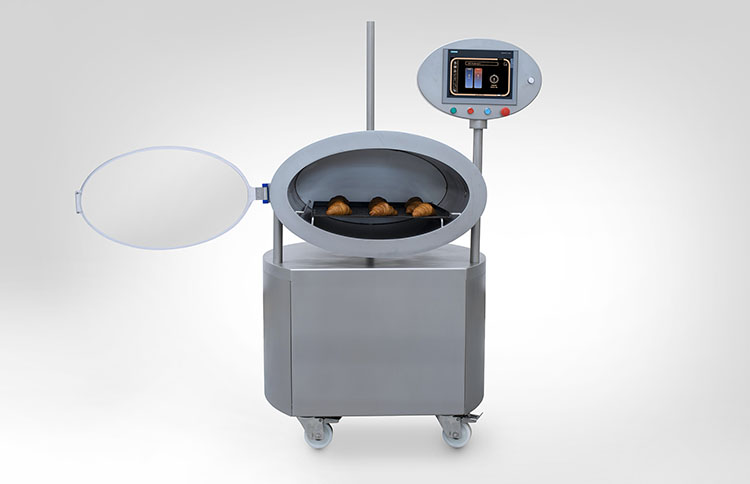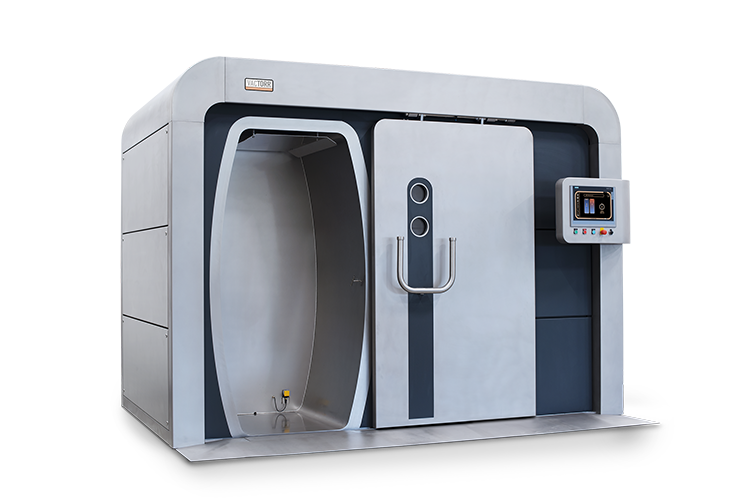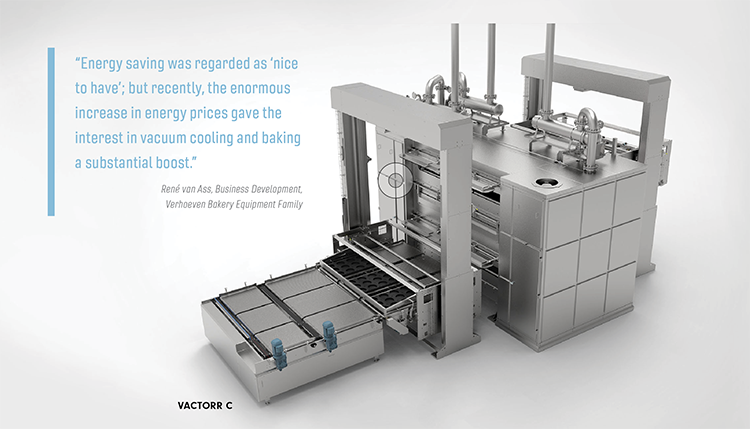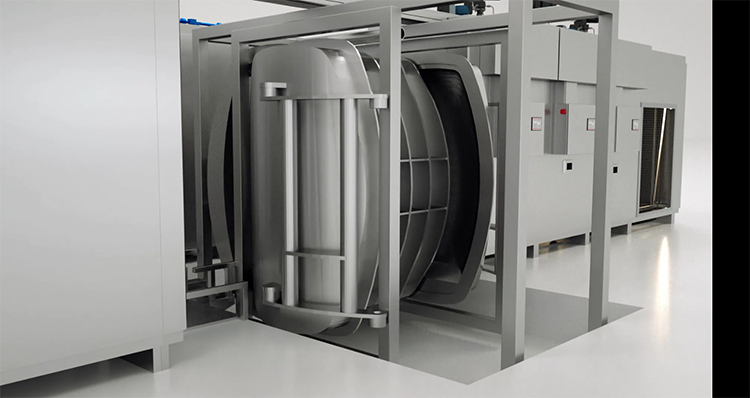
A game-changer in the baking process. Vacuum cooling and baking is recognized for its benefits, not just in processing speed, but also in stable results for delicate products. Vacuum cooling specialist Verhoeven Bakery Equipment Family recently developed three new systems to handle the process.
The principle behind the effectiveness of vacuum cooling and baking is the combination of the final part of baking with the cooling stage in the overall process. This process step is significantly shortened by changing the conditions in the environment: baking-off and cooling are done in just a few minutes instead of hours. To achieve this, the necessary environmental conditions are created in a separate chamber where the products have been moved from the oven, after 60-70% of the total baking time (the exact timing is determined according to each type of product). By lowering the pressure in this chamber with a pump, the boiling point is brought down to just a fraction of the normal boiling point, as low as 7°C, resembling an outer-space-like environment. “By changing the pressure in the chamber, we can manipulate the temperature and the moisturization of the products,” explained Rogier Vos, Commercial Product Group Manager, Vacuum Cooling & Baking Solutions, Verhoeven Bakery Equipment Family, at the launching event where the VACTORR was introduced. Very fine steam is immediately created in the product which also contributes to rapid cooling.
The R&D process and the result
By comparison, conventional cooling and baking processes have a boiling point of 100°C at sea level, wherein the core temperature will not go higher than 95°C. “This is a sub-optimal temperature for the gelatinization process, while the same process under a vacuum creates a higher starch gelatinization grade,” René van Ass, Business Development, points out. “For over eight years, the Verhoeven Bakery Equipment Family has studied in-depth various processes and recipes to create the ideal circumstances and the technology to precisely master the processes of baking-off and cooling, in order to manage the moisture distribution and structure of the final product,” he shares. To perfect the technology, the company appointed a specialized Vacuum Cooling and Baking Team, consisting of bakery and technical specialists who joined forces with specialized technologists such as Swiss Patrick Duss (a name synonymous with vacuum cooling). The specialist addresses the safety of this technology: “A vacuum is created and, while this takes place, enormous pressure variations are created in the machines. Safety first is our standard. This is why we were happy to learn and to develop our solutions measured to the standards and production testing software that NASA is using.”
The result was the VACTORR range, a pandemic-time launch, which was held virtually, with a Dutch Deputy Member of the Provincial Government unveiling the first machine remotely. The equipment made its in-person debut at IBIE in Las Vegas. “In the meantime, the solutions have been installed at various bakeries throughout the globe,” René van Ass says. The name VACTORR comes from a combination of the definition ‘Vacuum’ with the name of physicist and mathematician Evangelista Torricelli, the student of Galileo and the inventor of the barometer (the ‘Torr’ pressure unit was also named after him).

VACTORR B
The VACTORR range comprises three solutions, plus a complete production line to cover all bakery segments:
+ VACTORR A – the test laboratory version of the technology, which can work with small product volumes, for R&D purposes
+ VACTORR B – suitable for a range of batch-production operations, with 1 to 4 decks
+ VACTORR C – designed for a range of continuous production solutions, with 2 to 6 decks
+ VACTORR D – a complete production line with integrated vacuum cooling and baking, which is developed in cooperation with the Dijko ovens
Verhoeven Bakery Equipment has developed this as a ‘standard’ portfolio, but it can accommodate individual requirements for unique, custom-made solutions.

Enjoy vacuum cooling
Vacuum cooling brings numerous advantages, derived from being able to closely control the process, and respectively the outcome. This is reflected in product characteristics such as crispness, moisture distribution, volume and structure. In addition, the fast process leaves no time for bacteria to multiply during cooling. The ‘contamination’ phase is contracted to a few minutes, which spells gains in increasing the product’s shelf life.
Also, the production capacity can be increased dramatically due to the substantial time savings it helps achieve. For example, if products need around 20 minutes to reach the desired temperature with ambient cooling, the same temperature can be reached in 3-4 minutes with vacuum cooling. René van Ass observes a renewed interest in the technology’s sustainability, too: “During the past years, we have learned that the market was mainly focusing on rationalizing the process and improving the product quality, when considering the implementation of this technology. Energy saving was regarded as ‘nice to have’; but recently, the enormous increase in energy prices gave the interest in vacuum cooling and baking a substantial boost.” With the process, the raw materials used are also fewer, leading to a lower cost-per-unit. And the resulting product can claim a greener label.
For best results, all conditions should be taken into consideration, given by the match between the individual and personalized product recipe and the chosen vacuum process (the duration and chosen baking and vacuum curves). Once this has been analyzed and established, the settings can be saved with the software supporting ‘semi-automatic’ operation. The software is regularly upgraded with new versions, based on the information the system collects

VACTORR D detail


